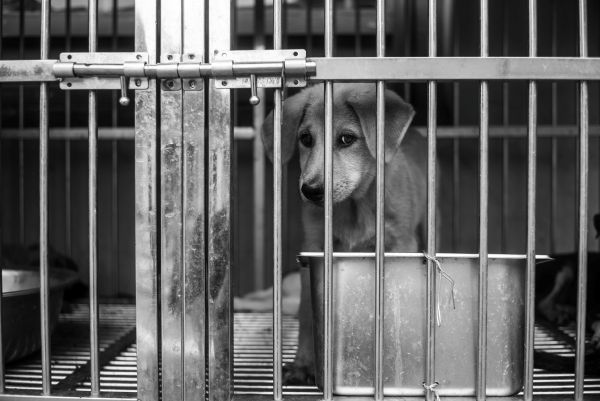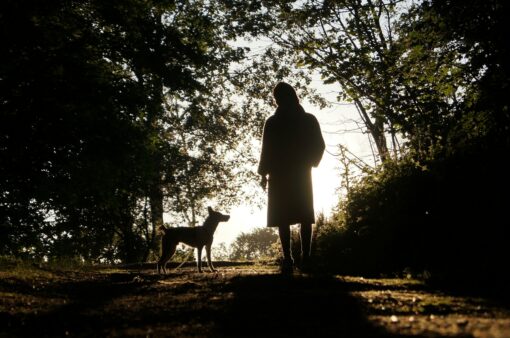Preparing for and Understanding the Pet Adoption Process

Just like pets themselves, animal shelters and rescue groups come in various sizes and types. If you choose to adopt (which we hope you do!) where you find your adopted pet can make a difference in terms of the length and complexity of the adoption process.
By better understanding the pet adoption landscape, you will be able to navigate adopting your next dog or cat in an informed way.
Whatever the process, taking your time to ensure that your family is choosing the right pet for your lifestyle will pay off for years to come—and a formerly homeless, abandoned, neglected, or unwanted pet will give and receive many years of love and joy!

Shelters vs Rescues: What’s the Difference?
Shelters and rescues share a common goal: temporarily housing homeless pets and “re-homing” those pets to permanent adoptive homes. This process involves providing the animal with basic care, medical care and sometimes training and rehabilitation as the pet awaits or prepares for an adoptive home.
A shelter typically refers to a municipal shelter facility funded and run by local governments (although there are also privately funded shelters.)
The term “rescue” or “rescue group” usually refers to an all-volunteer organization who houses animals privately in homes—often a network of foster homes—rather than in a shelter facility. In most cases a rescue works with a specific type of animal, such as a cat rescue, dog rescue, rabbit rescue, or reptile rescue. Some dog and cat rescue groups are “all-breed” rescues, meaning they accept any or most any breed, while others are breed-specific, such as a Border Collie rescue or a Beagle rescue. There are even rescues that specifically work with small dog breeds, large dog breeds, or senior dogs. Rescue groups are funded solely or primarily by private donations.
Shelters often also utilize a network of foster homes, and some rescues do have a facility.
Animal shelters and rescues often work together, with rescue groups taking animals from often over-burdened city or county shelters. Both shelters and rescues serve important functions on behalf of homeless animals, and you can find wonderful pets at both.
Where Do All the Pets Come From?
The animals housed in shelters and rescues come from a variety of backgrounds. Sometimes a shelter or rescue will have a detailed history they can share with you, but in many cases, there is limited information available on the pet’s prior history. Sometimes this is despite the best efforts of the shelter or rescue to collect as much background information as possible.
Most of the animals that find themselves in a shelter or rescue were either given up by an owner who either no longer wanted the pet or was no longer able to care for the pet (due to moving, illness, financial difficulty, or a number of other reasons), found stray or abandoned, or rescued from an abusive or neglectful situation by humane law enforcement or animal control. In some cases, shelters and rescues take in animals from large-scale puppy mill raids and shutdowns and national and international disasters
The Adoption Process
The adoption process can take as little as a couple of hours to as long as a couple of weeks or more depending on the shelter or organization. Shelters typically have a shorter adoption process (due to a much higher volume of animals), often allowing you to take your new pet home the same day, while rescues tend to have a lengthier process that can take days or weeks. (Don’t mistake a quick shelter adoption process for a lack of concern for the individual animals. Most shelter staffers are devoted to their work and to the animals but must balance this with constant influx of new animals in need.)
Most shelters and rescues will require these basic elements:
- -A completed adoption application
- -A valid driver’s license or identification
- -Proof of residence
- -An adoption counseling session/interview
- -Payment of an adoption fee
Additionally, some will require:
- -Approval from your landlord or rental agency if you rent
- -Your veterinarian’s contact information if you currently have pets
(They will contact your vet to verify that your pet is current on vaccines and annual exams.)
- -A home visit
- -All household members to meet the pet
- -Your current dog to meet your potential new dog
- -References
To expedite your adoption, it is best to be prepared for the adoption process in advance of selecting a pet. Visit the website of the shelter you plan to visit or the rescue you plan to contact before doing so. The website will explain the organization’s specific adoption process and requirements so you can gather your necessary documentation and be prepared to complete the adoption application and process as soon as possible. Keep in mind that the adoption interview and process is a two-way conversation. This is also your opportunity to ask questions, find out as much as you can about the animal, and get advice on helping the new pet adapt to your home and family.
Mixed Emotions
Occasionally, adopters feel like the adoption process, especially a lengthy one, is too difficult or time-consuming to navigate. They may feel that a home visit is intrusive, and it has even been said that it’s harder to adopt a pet than a child!
If you find yourself having any of these feelings, it’s important to take a moment to remember that often the adoption counselor or foster person you are working with feels attached to the animal they’ve been caring for. They are excited to see the animal be adopted to a new family, yet at the same time it can be extremely difficult for them to part with the animal, who they may have been caring for and living with for weeks or months.
Even in a shelter with a high volume of animals, staff and volunteers can establish bonds very quickly with the animals they are caring for. These caretakers feel an enormous responsibility to ensure the animal is going to a loving, permanent family, particularly when they’ve seen the devastating circumstances some of these animals have come from.
Be patient—whether the adoption process takes two hours or two weeks, you’ll have many years ahead of you with your new companion!

